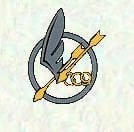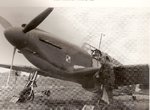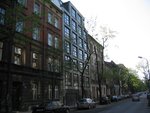I don't know why I did this but I saw this picture of RAF Mustang IIIs and decided to find out what unit they were from. It took me a while, going off the WC prefix. So, I decided to share it with squadron information for some odd reason.
No. 309 Squadron (Ziema Czerwienska)
Formed at Abbotsinch on 8 October 1940 in the Army Co-operation role from Polish personnel. It was proposed that it should work with the Polish Army, them training in Scotland and was equipped with Lysanders for this purpose.Lysanders remained the squadron's main equipment until March 1943, but in July 1942 some Mustang Is were received, which were used for tactical reconnaissance operations over France. In February 1944 the squadron converted to the Hurricane IV due to the unreliability of the Mustang I's Alison engine. Hurricane IICs replaced the IVs in April and Mustangs returned in October in the form of the Merlin engined Mk III. In December 1944 the squadron became a bomber-escort unit based in East Anglia, remaining as such until the end of the war. The unit remaining part of Fighter Command until disbanding on 6 January 1947 at Coltishall.
No. 309 Squadron (Ziema Czerwienska)
Formed at Abbotsinch on 8 October 1940 in the Army Co-operation role from Polish personnel. It was proposed that it should work with the Polish Army, them training in Scotland and was equipped with Lysanders for this purpose.Lysanders remained the squadron's main equipment until March 1943, but in July 1942 some Mustang Is were received, which were used for tactical reconnaissance operations over France. In February 1944 the squadron converted to the Hurricane IV due to the unreliability of the Mustang I's Alison engine. Hurricane IICs replaced the IVs in April and Mustangs returned in October in the form of the Merlin engined Mk III. In December 1944 the squadron became a bomber-escort unit based in East Anglia, remaining as such until the end of the war. The unit remaining part of Fighter Command until disbanding on 6 January 1947 at Coltishall.





